Is it a flag? Scattered remains of a flag? Scattered remains of a day on a starkly empty street in a starkly scorching day in sublime and sad Srinagar?
Is it a rag, a worn-out cloth, a piece of ravaged cotton, a synthetic memory of absolute loss? Did it belong to a home, imprisoned, locked out, blocked out, holed out, ghettoized, occupied, synchronized and trapped by the daily movements of barricades in the lanes and bylanes, doors and windows shut, and you can’t even hear the sound of children playing, or footsteps, or call bells and phones ringing, or hawkers and ice-cream vendors on the streets; you can’t smell the fragrance of food being cooked anymore.
In the vicious circle of a rusted barbed wire going round and round with its pointed thorns, the faded cloth flutters in stark daylight like a piece of history in subjugated time and space. It flutters in the barbed wire because that is its destiny. It is trapped forever, wounded and torn, with not even the dream of freedom embedded in its soul.
The wind moves with no emotion. There is no joy in the sunny day or in the cool wind. There is no joy in un-freedom. In this endless prison of occupation with 8 million prisoners. Mothers, wives, sisters, little kids, young men, lovers, newly-married couples, those mourning the loss of their loved ones. Funerals are just about held, quickly, because mourning in a public space is difficult with so many barricades. Relatives do not even know if there is a death in a family. Most weddings have been postponed, and birthdays come and go without the candles or the song, or the smiles and the blessings. Between invisible funerals and weddings that did not happen, this is a prison gifted to the people of Kashmir by the government of India.
An infinite prison in surveillance and clampdown, crackdown, communication and social lock-down. In jackboots ruling the roost every five minutes, across local maps and geographies, with check-posts, barricades, armed guns, and armoured vehicles. Plus, the Armed Forces Special Powers Act. Plus, midnight raids, the fear of midnight raids, and house arrests, and destination of detentions unknown. Plus, beatings and reported torture. Plus, the Public Safety Act and similar draconian laws. Plus, the police state and military dictatorship run by a Right-wing regime in Delhi under the garb of majority democracy.
On August 5, the BJP government at the Center abrogated Article 370 and 35A that conferred special status to Jammu and Kashmir and turned the state into a dystopian nightmare. With the help of thousands of troops, it imposed a lockdown of the kind that perhaps have only been attempted in China’s Xinjiang province against the Uighurs in recent times. This was the BJP government’s idea of integrating a region into the country, or, in their eternal imagined utopia of ‘Akhand Bharat’.
The wind moves with no emotion. There is no joy in un-freedom. This is no democracy, certainly not in the largest democracy in the world.
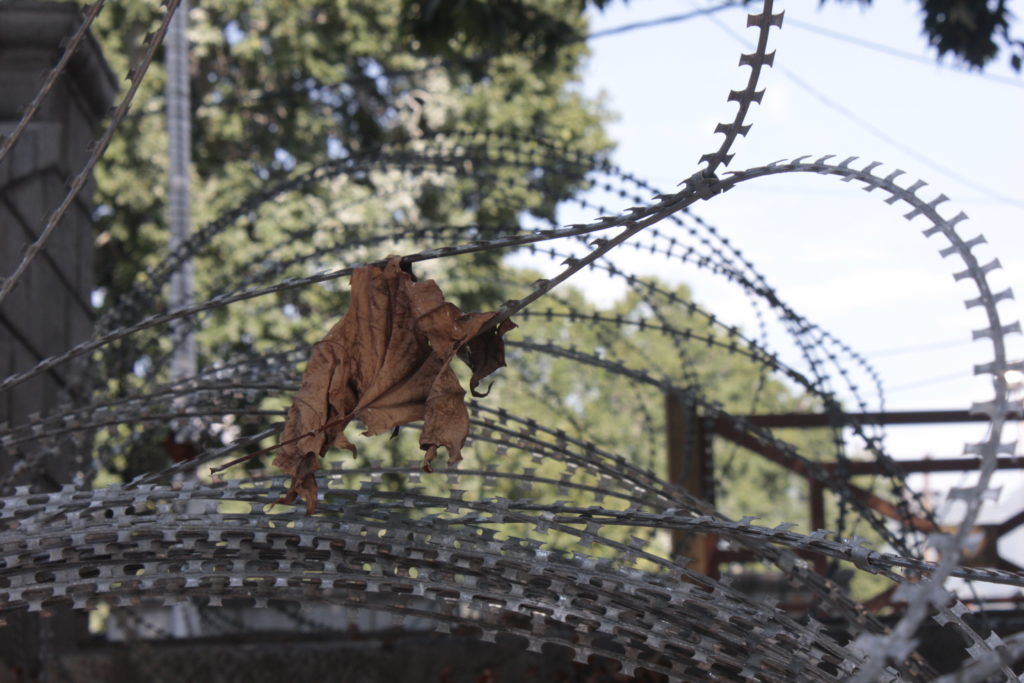
They were asking too many questions at the barbed wire and sandbag barricades. Were they? Were they asking for far too many documents? One 85-year-old man was hit by a car. The neighbours were rushing him to the hospital. The men with guns did not listen. So they tried the other inner lanes. Desperate, they kept trying. The old man reportedly died before they could hit the hospital.
She wanted to meet her maternal cousin. He is sick and at the other end of the town across too many barricades and check posts. How can she reach there? Is he at home or in the hospital?
The landlines are not working – all normalcy is false optics. The mobile is down. Reaching out to even the neighbours days after August 5 seemed an impossibility. So what to do? Brave the check posts? Move into the vicious circle? Enter the dragon?
So what did she find once she reached the far end of Srinagar looking for her ailing cousin? He was dead. He died three days ago. No one knows, so mourning was isolated and lonely. All mourning is isolated, solitary and lonely these days. There is no collective catharsis or solace. Live alone. Trapped, holed in, barricaded, ghettoized. Die alone. Shut your eyes, inhale, and know that you are in an extended prison.
The wind moves with no emotion. There is no joy in the sunny day or in the cool wind. There is no joy in un-freedom, in this endless prison of occupation with 8 million prisoners.
All 8 million Kashmiris in the valley and beyond. In an extended, limitless prison in a beautiful but tragic landscape.
Reminds us of what? Reminds us of the biggest open-air prison in the world – Gaza. Occupied Gaza.
On the faded wall of a downtown building in Srinagar, it is clearly written: Free Gaza. A truck passes in the night with a familiar face etched on to its body: Che Guevara in colour.
For a couple of hours in the morning and night, it’s a civilian curfew all over uptown and downtown Srinagar where not one shop is open. The government says all is normal, peace has returned, everything is hunky-dory. The people are saying a Goebellsian lie repeated a thousand times does not make it a truth, nor does fake news on the TV channels of stooges makes it real. Nothing is normal. The ‘new normal’ is the new abnormalcy of a city and valley under siege.
In the morning there are short civilian curfews imposed by unseen protestors. There are rumours that this is done by the diktat of the ‘mujahideen’ –- no one can say for sure. There are other rumours that notices and posters are put up, and there are notes circulated from house to house to observe this civilian curfew in protest. There are, of course, word-of-mouth underground dissemination of information, messages, warnings, instructions, as part of the resistance network.
In a conflict zone, where, between one lane and another, there is a total communication breakdown and residential areas are under siege, nothing is black and white. The free movement of vehicles in recent times since the first week of September was temporary; it was yet again blocked by the siege of Moharram, when it all came back to square one of occupation with empty streets and the paramilitary on the move, with gunmen on top of vehicles surveying the barren expanse, restoring fake normalcy in infinite abnormalcy.
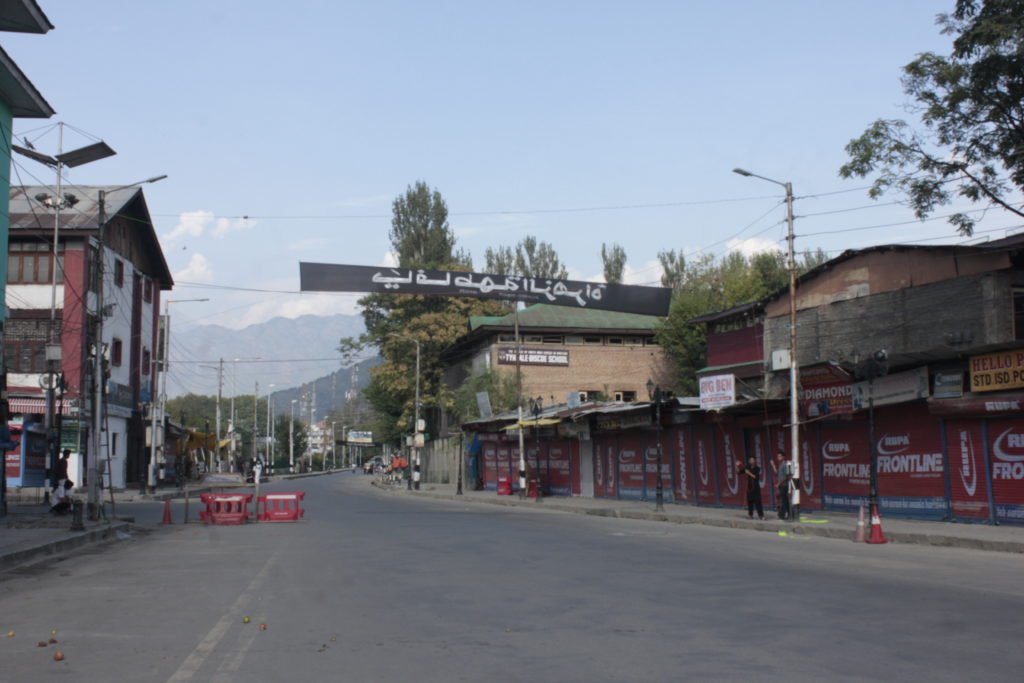
Even as the tragic and dramatic recitations of the story of Karbala and the sacrifices are narrated to a fixated and spell-bound audience, all in black, in a hall through the nocturnal bylanes of Lal Bazaar, and food is being cooked for a collective dinner later in the night, a night blackout is being observed in downtown Srinagar with its maze of lanes and inner lanes, surrounded by beautiful wooden houses. There were no cops or paramilitary on that night of early September. There are only young boys on bikes enforcing the blackout – a car or scooter with lights on will get their lights smashed while homes are in subdued darkness. It’s a surreal summer night. Moharram’s dark memories in mourning inside one lane; resistance, peaceful and with stones, inside another lane.
Across the Dal Lake, other areas across the city are preparing for another round of protests. There are three popular slogans that are back: “One Solution, Gun Solution”, “India Go Back!” and “Azadi”. Sometimes you can hear them in the thick of the night.
They have denied processions for the Shias on Moharram this year. People have not floated flags of Hezbollah in Lebanon or Iran this time. Many trace their archival and ancient cultural roots to Iran in this ‘pro-India’ Shia enclave – now in a grave dilemma. Dressed in black, they are all asking: why are they destroying our lives, our children’s education, our apples and carpets, our shops and trades, our economy and business, our daily life, our peaceful sleep, our relationship with India? We’re not with Pakistan. We don’t want to go with Pakistan. We want peace and harmony. So why is New Delhi treating us like enemies? Why, why, why?
In the tense and volatile, but quiet area of Nowhatta, the Jama Masjid, a sprawling beautiful ancient structure, is trapped in barricades and eternal emptiness. Not even a bird flies over its arched tombs and red brick walls. Prayers are banned here, as in the famous Eidgah. Even on Eid, no one was allowed to pray here as is the huge, collective ritual every year.
READ: Chinese Challenge to Modi’s Kashmir Gamble
Outside another famous and holy monument, the Hazratbal, barricaded with bamboo poles and ropes, scores of blue pigeons fly across the main gate, while a woman distributes food, and a young boy clicks a picture. If this is normalcy in a space of prayer and meditation, then peace, surely, has returned to Srinagar.
People are not allowed to pray at the Jama Masjid and Hazratbal. All they are allowed is to congregate in the local mosques. “This hurts,” said a veteran. “Can they stop Bengalis from celebrating Durga Puja, and Maharashtrians from celebrating the Ganesh Mahotsava, and North Indians from celebrating Diwali or Holi, and Gujaratis from celebrating the Dandi dance and Navaratras? Can they stop the rest of India from going to their sacred places of worship, to pray, observe silence, to mourn and celebrate, and share prasad and prayers together?
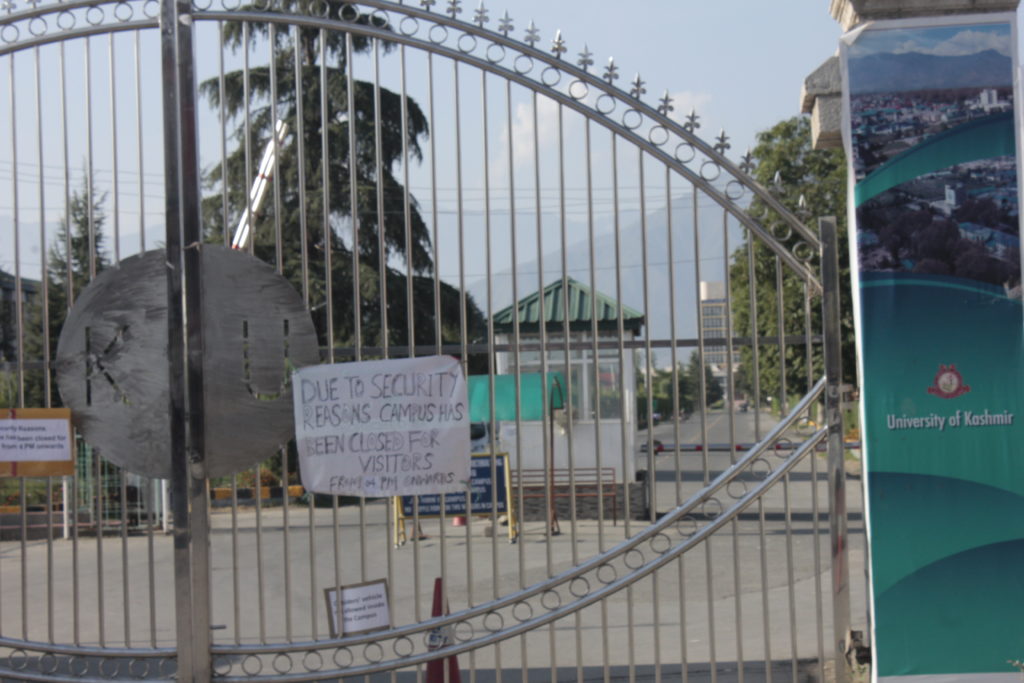
The high-pitched staccato sound moves post-midnight in peaceful Lal Bazaar. It is coming from the epicenter of resistance, even as people try to sleep without dreams. Are they slogans? Yes, they are. Slogans, speeches messages, warnings — on loudspeakers. Midnight resistance not so far away from the deceptively peaceful areas of downtown Srinagar, with people in black, observing the mourning of Moharram.
Anchaar and Soura: ‘Liberated zones’ in the time of jackboot occupation. Roads are dug up by civilians. Girls have lined up stored bricks and stones for counter-attacks. Households are ready. There are barbed wires here too, and barricades, and blocked dead-ends, and dug up roads — against the army. No one can enter here, no Indian journalist, not even Kashmiri journalists.
A veteran Kashmiri journalist entered the area in early September, along with a reliable local contact, after one month. But, where can he write his story? And where can he write his story? Even if he is given access to the government-controlled media center, where can he file his news report? In which paper and in which portal, whereby the newspapers have been turned into government propaganda sheets, and the portals are dead? It’s like saying, go fly, but they all know that they don’t have wings.
“These are the liberated zones. They will have to do carpet bombing with war planes to stop them,” said a Kashmiri journalist.
In the night the loudspeakers are calling upon the community to be ever-vigilant. Groups of young men patrol the streets and inner lanes. Street protests are routine in the daytime. On August 30, there were pitched battles in the area. At least 150 to 200 people were injured, according to sources, including around 80 girls. People suffered pellet injuries, often, above the waist. Since they will not go to hospitals, because then they will be detained and charged, the mosque became a make-shift hospital. Two doctors were reportedly rushed on a boat across the river to give emergency medical treatment.
“These are the liberated zones. They will have to do carpet bombing with warplanes to stop them,” said a Kashmiri journalist.
READ: Personal Political: Eerie Silence
Even in some uptown areas such as Natipura, there are stone-pelting and pitched battles almost on a daily basis. A journalist showed the picture of a tear gas canister near his house with an expiry date of 2018. There are torchlight processions in the night and areas are blocked all day – even journalists can’t move out. Anyway, local cops know them, track them, profile them. A cop perched on a chair in Lal Chowk pointed to us in the car of a local businessman. Who are they, he asked. He said, “They have come to attend a marriage in my family.”
There are no marriages happening in his family. There are no marriages happening in most families.
All landlines are dead after being “restored”. It’s like the false metaphor of “restored normalcy”. Wonder how many landlines truly are in the valley? There is no curfew, but no one can move out on the streets. The petrol pumps open only in the night for those who still try to move in their vehicles. There are people sitting on the streets with plastic bottles filled with petrol and diesel. Night travel is anyway deceptive, full of shadows and strange forebodings. It’s difficult, life in Srinagar, in the daytime. In the night, it’s uncanny.
In the stark afternoon, the entire Press Colony in the Residency Area is shut, with barbed wires and a CRPF check post. Not one journalist or editor in sight. The famous Lal Chowk is all shutters down and empty. The politically famous Ghantaghar (clocktower) where Sheikh Abdullah and Jawaharlal Nehru made those famous speeches addressing huge crowds in post-Independent India is now nothing but an empty landscape trapped in utter sadness. The blue mausoleum of Sheikh Abdullah near the Dal Lake lies lonely and desolate.
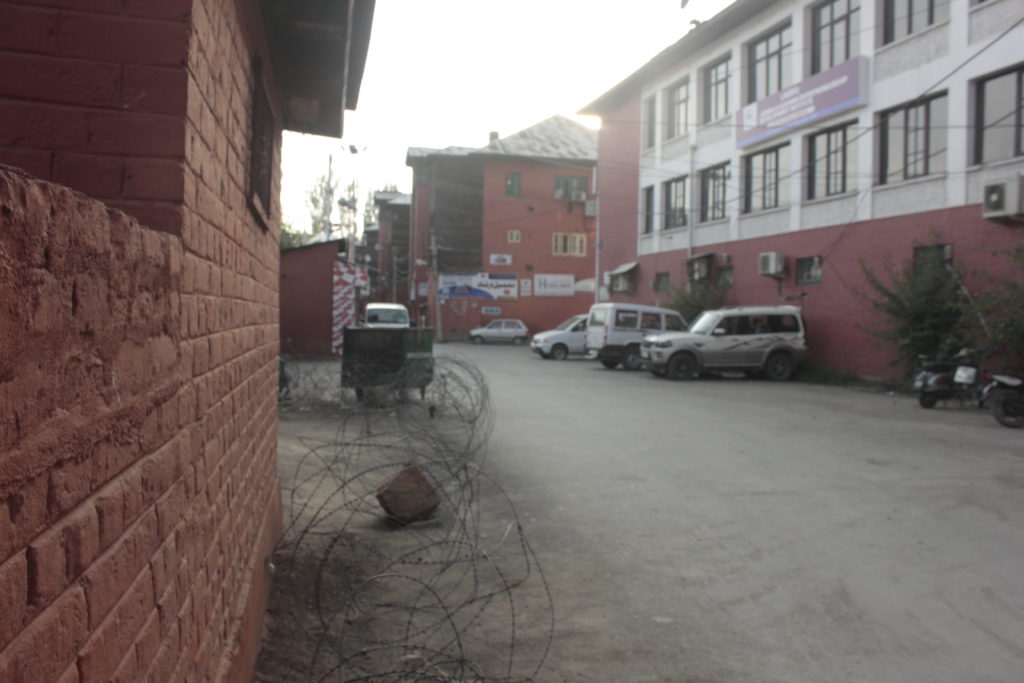
Indian journalists are hated. Foreign journalists are trusted. “Indian journalists do nothing but fake news, paid news, government propaganda,” said an elderly gentleman. “They keep repeating the same thing – all is normal, all is becoming normal, all will become normal. Is this normal out here just because there is no curfew? Are the shops open? Are those released walking free? Are the schools and clinics open? Are they speaking to Kashmiris after having forcibly gagged them?”
The big papers like Greater Kashmir, Rising Kashmir, Kashmir Reader, have been reduced into 4 pages of government propaganda, with no distribution network, and all news-stands shut. One paper has carried an op-ed piece on botox, local journalists laugh. Photo essays or critical pieces are not allowed. Reports from the ground, for instance, on stone-pelting or injuries, or, from hospitals, or empty schools, are not allowed. There is visible and invisible censorship and it is there for all to see.
“Write about it when you go back,” said a journalist to this reporter. “Write that there is no freedom of expression here. It’s all government propaganda and terror tactics.”
So what did she find once she reached the far end of Srinagar looking for her ailing cousin? He died three days ago. No one knows, so mourning was isolated and lonely. Live alone. Trapped, holed in, barricaded, ghettoized. Die alone. Shut your eyes, inhale, and know that you are in an extended prison.
The Network of Women in Media, India (NWMI), and the Free Speech Collective (FSC), which sent a team to Srinagar in early September, has issued a report. On the media in Kashmir. It has made the following observations:
Key findings: Curbs on the media and its implications…
- Surveillance, informal ‘investigations’ and harassment of journalists who publish reports considered adverse to the government or security forces
- Blockade of verifiable information from the ground
- Restrictions on mobility in select areas including hospitals
- Controls on facilities available for print publication
- Three journalists reporting for international and credible national media who have been allotted government quarters, received verbal directions to vacate
- Restrictions despite no official curfew, no official notification for the shutdown
- Landlines are working only in certain areas but not in the press enclave, which houses most of the newspaper offices
- The inability to respond to playbacks and queries from editors on email and phone, especially regarding fact-checks, has meant that stories cannot be carried in the national media
- A clear ‘unofficial’ directive regarding what is permissible content
- Absence of the editorial voice in major newspapers in Kashmir; instead, editorials on ‘soft’ subjects such as vitamin consumption
- Lack of safety for women journalists
- The throttling of independent media, endangering both media freedom as well as impacting employment of working journalists
- Government control of the narrative of normalcy and proclamations over the creation of a ‘Naya Kashmir’
- Silencing and invisibilistion of the voices from Kashmir expressing anger over perceived breach of trust, alienation and disillusionment
The Dal Lake is full of lotus flowers in the outskirts of Srinagar. All shikaras and houseboats are empty. A few lonely boats cross a bylane of the backwaters where the lake might be meeting the waters of river Jhelum. Across the Zero Bridge on Jhelum, all shikaras are empty. The houseboats at the Dal Lake overlooking the new ‘VIP prison’ of Hotel Centaur across the other end of the waters are all empty.
There are no tourists. No honeymooners, no Indians, no foreigners, no taxis, no hawkers, no film shootings. Even the OB vans are absent since some ‘mainstream’ TV channel reporters are holed up in their hotel rooms – they are hated for their daily fake news.
Some shikara owners are selling vegetables. Auto drivers have no passengers. Just about 2 per cent of people are out near the lake during the civilian curfew in the evening. Others rush past to their destinations, knowing that phones don’t work and they need to get back home before dark. Children, holed up in their homes, are feeling condemned — they miss the open playgrounds, the schools, the classrooms, their friends and their internet.
There are no tourists. No honeymooners, no Indians, no foreigners, no taxis, no hawkers, no film shootings, not one moment of business or festivity. Even the OB vans are absent since some ‘mainstream’ TV channel reporters are holed up in their hotel rooms – they are hated all over Kashmir for their daily bulletins of fake news. Because of their shoddy, propaganda journalism, objective and independent reporters find it difficult to report in hostile public spaces.
“Modi has destroyed us,” said an auto driver. “Modi has forced us to starve,” said a kabab-roti seller. “Modi is a bad man,” said a vegetable seller on the street.
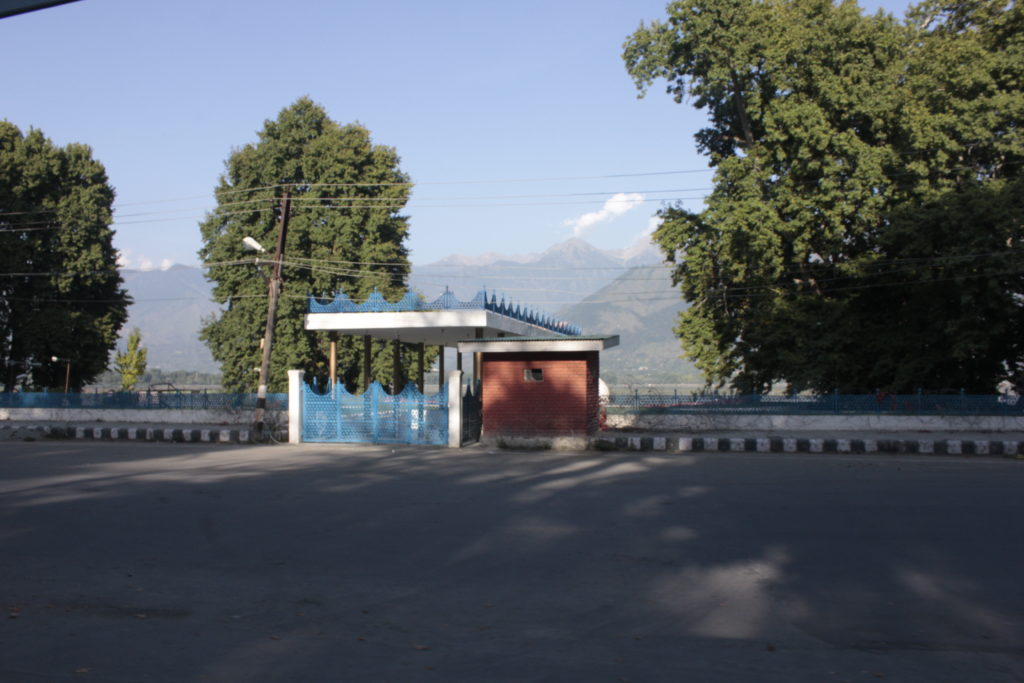
Across the Dal Lake, other areas across the city are preparing for another round of protests. There are three popular slogans which are back: “One Solution, Gun Solution”, “India Go Back!” and “Azadi”. Sometimes you can hear them in the thick of the night. In the daytime, you can see them on placards – with the date and day written clearly on it. The protests at times loom over the valley like a loud invisible being.
So that the government’s propaganda machine and its loyalist media cannot claim that nothing happened – Nothing happened. No protests in thousands ever happened in Srinagar, as the government claimed; but protests in thousands did happen, as it happened, in downtown Srinagar, days after August 5, 2019. And in many other volatile points, again and again, like waves of anger and angst written on the silent walls.
Photographs: Aritra Bhattacharya
Article 35AArticle 370BJPJammu and KashmirKashmirLadakh